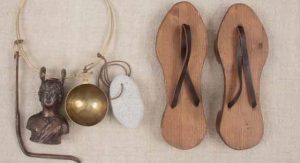17 November 2015 – 16 November 2016
“It (water) is of infinite importance, for the purposes of life, for pleasure, and for our daily use,” wrote Vitruvius 2000 years ago. In this sentence he summarised all that water meant to the Romans. To this belongs the ‘Roman baths’, the building type created by the Romans, and the ‘bathing culture’ which the Romans gave to the world. It was most likely the same in Aquincum, rich in waters. What remains are stones, bricks, mortar, as well as metal and pottery fragments, but with the help of ancient eyewitnesses, they can come to life once again filled with hubbub and buzz. The exhibition at the Aquincum Museum aims to showcase the bathing customs of the Romans. Baths were not only about daily hygiene, but also about ‘being well’ and ‘feeling good’; they were the place of recreation for both body and spirit.
In Aquincum we know of twenty-three baths so far. According to our literary sources, Romans went to the baths after work, usually in the early afternoon. Those who went to the baths first did some sports, and then could switch between hot and cold baths at will and reinvigorate their bodies in various saunas; they likely did not skip massage either. If needed, they could also get medical or cosmetic treatments there. If they were thirsty or hungry, they could go to the refreshment stalls by the baths’ entrance. That this really was the case is also supported by the remains of baths unearthed in Aquincum. In addition to these baths that dotted the towns, the Romans also had famous thermal baths, to which visitors came from far away, and which may have been used by the military for the purposes of recreation. In today’s renaissance of thermals baths and spa tourism, we probably do not think about how the healing power of springs had already been used in a similar way 2000 years ago. The famous doctors of antiquity e.g. Celsus and Galen all agreed that exercise, massage and bathing had an important role in maintaining and improving good health.
While we cannot invite visitors to a real Roman baths, we would still like to help them experience the past in a tangible way. The museum’s conservators have therefore made copies and reconstructions of typical bathing utensils, which visitors can try out and also take a sniff of the perfume-jars. A 3D animated film presents how the Roman baths were operated. To make the exhibition enjoyable also for families with small children, we made a model waterwheel and a hidden picture book, which presents the Romans’ reverence for springs and their bathing culture. Come with us then to the baths of Aquincum and experience wellness in antiquity.
Supported by: Budapest Waterworks
Curator: Gabriella Fényes



